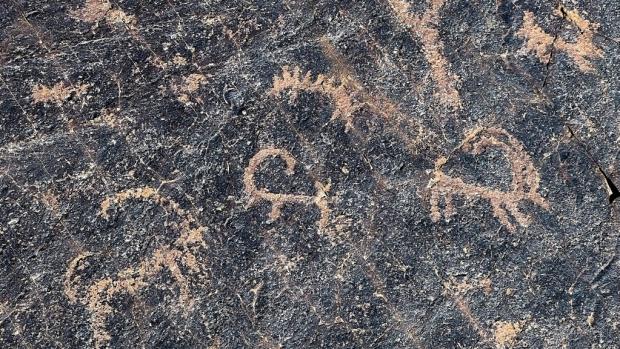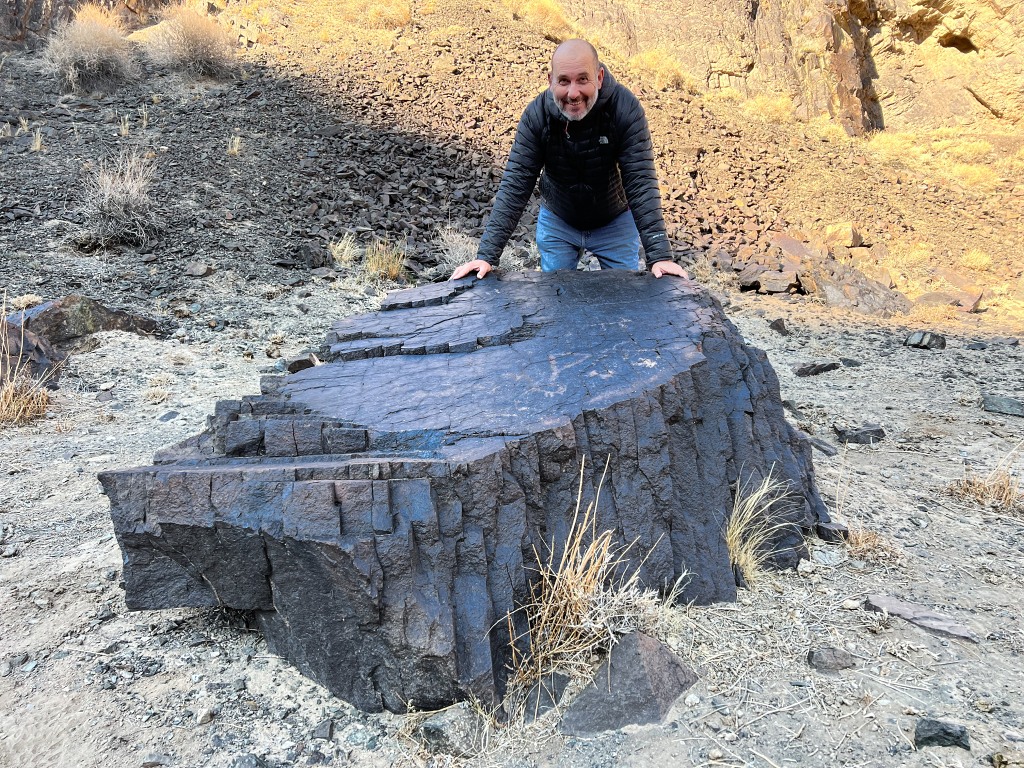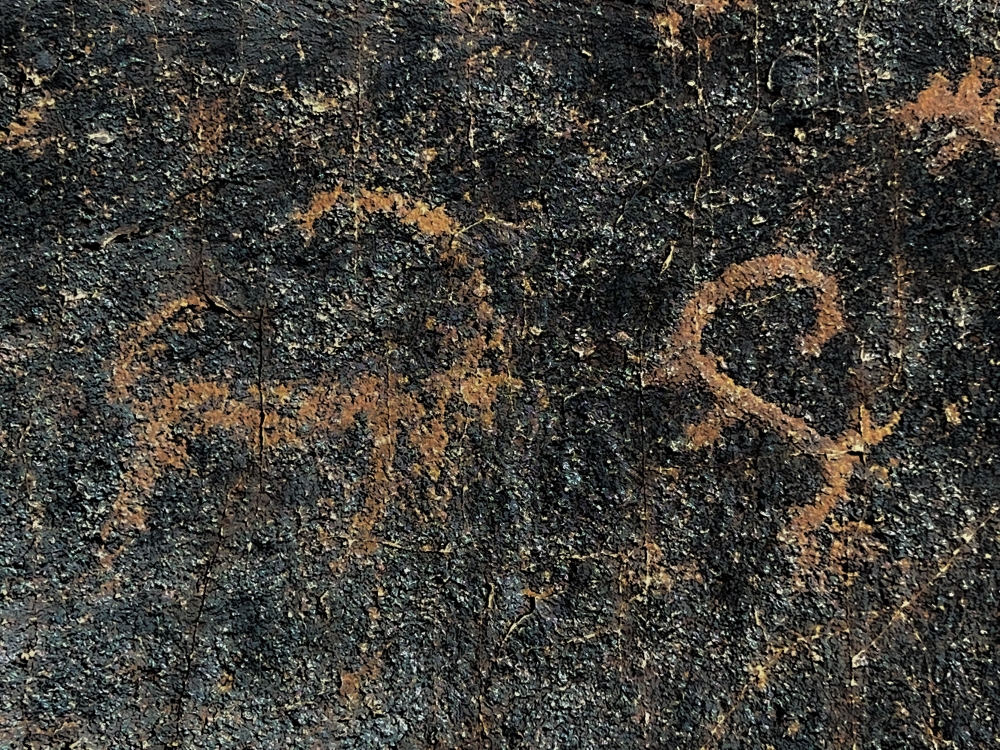Petroglyphs from the Great Gobi

Next to the Przewalski’s horse enclosure, there is a stone decorated with petroglyphs depicting ibexes and other creatures or objects. It is a replica of a real stone discovered by Miroslav Bobek, Prague Zoo’s director, in 2022 in the foothills of the Altai Mountains in Mongolia, in the Great Gobi B Strictly Protected Area near the Chinese border. No one knew about these petroglyphs until his discovery!
 The stone with petroglyphs in the Great Gobi B area. Photo: Miroslav Bobek, Prague Zoo
The stone with petroglyphs in the Great Gobi B area. Photo: Miroslav Bobek, Prague Zoo
Unexpected discovery
And what were the fortunate circumstances that led to this discovery? This is how Miroslav Bobek himself described it:
"At one point, I was intrigued by a small flock of partridges, which I tried to photograph. After they had finally disappeared high up into the rocks and I turned to head back, I subconsciously registered a large, black, almost table-flat stone. I had already passed it when it flashed through my mind that I ought to take a closer look. I went back—and froze in astonishment. There were engravings on the black, glossy surface! They depicted ibexes, but also other, unidentifiable creatures or objects. An incredible sight!"

Prague Zoo’s director Miroslav Bobek at the site of the discovery in the foothills of the Altai Mountains. Photo: Prague Zoo archive
What are petroglyphs?
Petroglyphs are images on rock surfaces created by human hands. The term comes from the Ancient Greek words petros (“stone”) and glyphein (“to carve”), and as these words suggest, the images are made by cutting, chiselling or carving into the surface of the stone.
Petroglyphs have been found in many places around the world (with the exception of Antarctica), with the greatest numbers discovered in Africa, Scandinavia, and Siberia. Their age can vary greatly, spanning thousands of years. Many discoveries have been dated to the Neolithic and the late Upper Palaeolithic periods (roughly 10,000 to 12,000 years ago), though some were created in later times as well.

Detail of the original stone with petroglyphs depicting ibexes. Photo: Miroslav Bobek, Prague Zoo
Thanks to their age, the petroglyphs offer us a glimpse into the lives of the people of that time and the environment in which they lived—they provide evidence, for instance, of the ancient use of yurts and the wheel. The petroglyphs on the original stone are probably Bronze Age, i.e. about 2,700 to 5,000 years old.
Článek v českém jazyce:
ZOOPRAHA.CZ
Contacts
- The Prague zoological garden
U Trojskeho zamku 120/3
171 00 Praha 7
Phone.: (+420) 296 112 230 (public relations department)
e-mail: zoopraha@zoopraha.cz
Others








